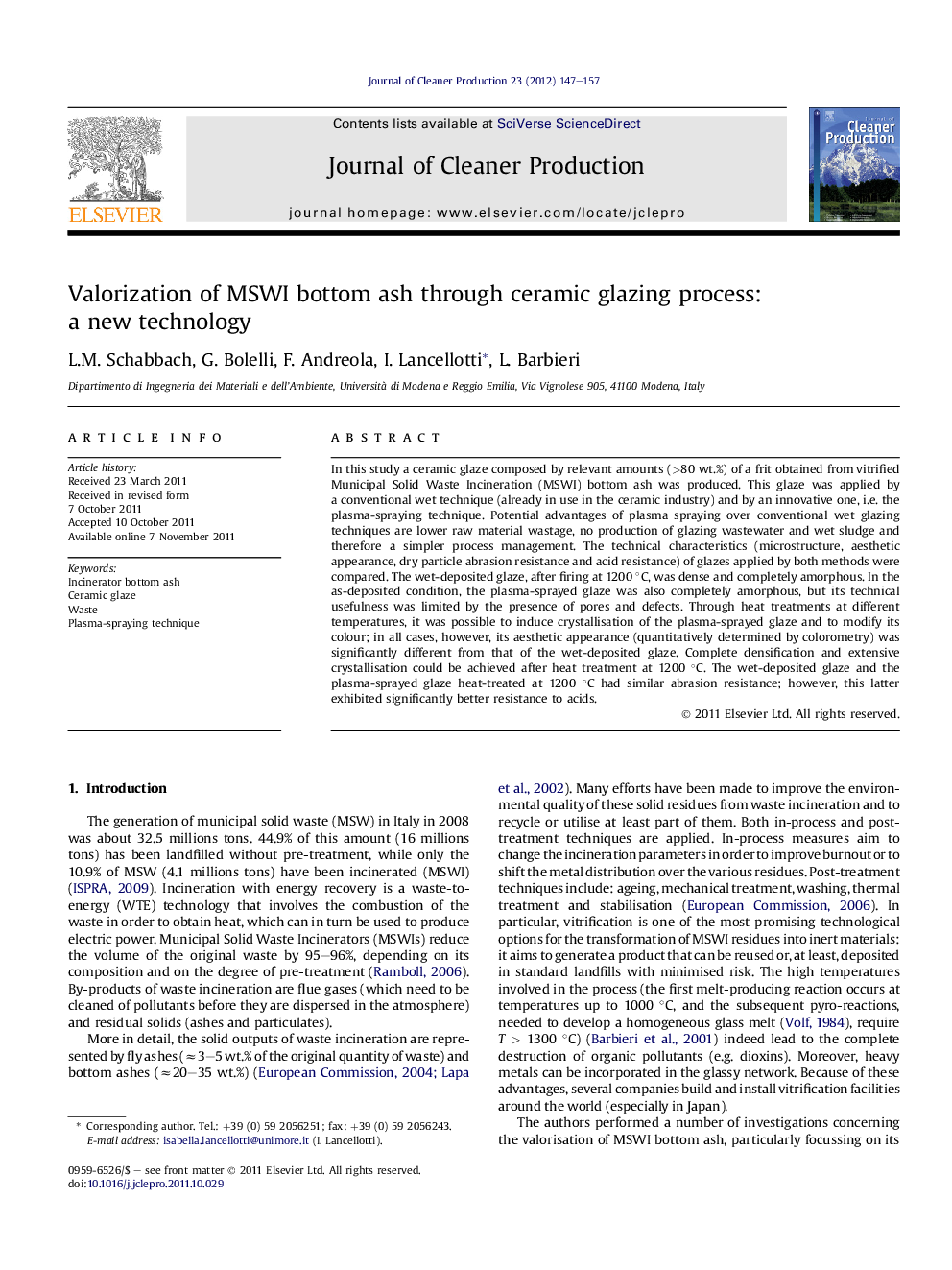| Article ID | Journal | Published Year | Pages | File Type |
|---|---|---|---|---|
| 1745812 | Journal of Cleaner Production | 2012 | 11 Pages |
In this study a ceramic glaze composed by relevant amounts (>80 wt.%) of a frit obtained from vitrified Municipal Solid Waste Incineration (MSWI) bottom ash was produced. This glaze was applied by a conventional wet technique (already in use in the ceramic industry) and by an innovative one, i.e. the plasma-spraying technique. Potential advantages of plasma spraying over conventional wet glazing techniques are lower raw material wastage, no production of glazing wastewater and wet sludge and therefore a simpler process management. The technical characteristics (microstructure, aesthetic appearance, dry particle abrasion resistance and acid resistance) of glazes applied by both methods were compared. The wet-deposited glaze, after firing at 1200 °C, was dense and completely amorphous. In the as-deposited condition, the plasma-sprayed glaze was also completely amorphous, but its technical usefulness was limited by the presence of pores and defects. Through heat treatments at different temperatures, it was possible to induce crystallisation of the plasma-sprayed glaze and to modify its colour; in all cases, however, its aesthetic appearance (quantitatively determined by colorometry) was significantly different from that of the wet-deposited glaze. Complete densification and extensive crystallisation could be achieved after heat treatment at 1200 °C. The wet-deposited glaze and the plasma-sprayed glaze heat-treated at 1200 °C had similar abrasion resistance; however, this latter exhibited significantly better resistance to acids.
